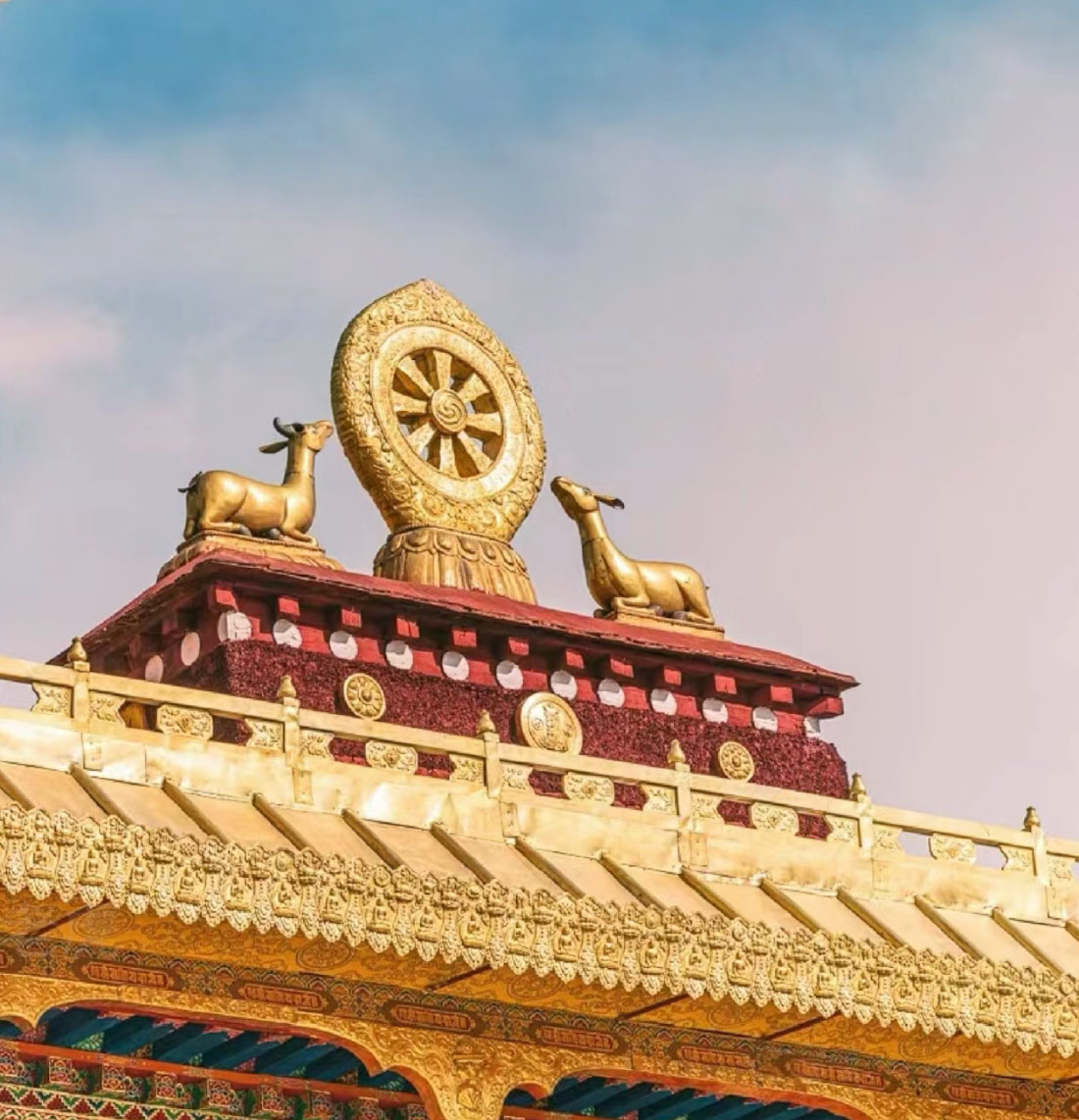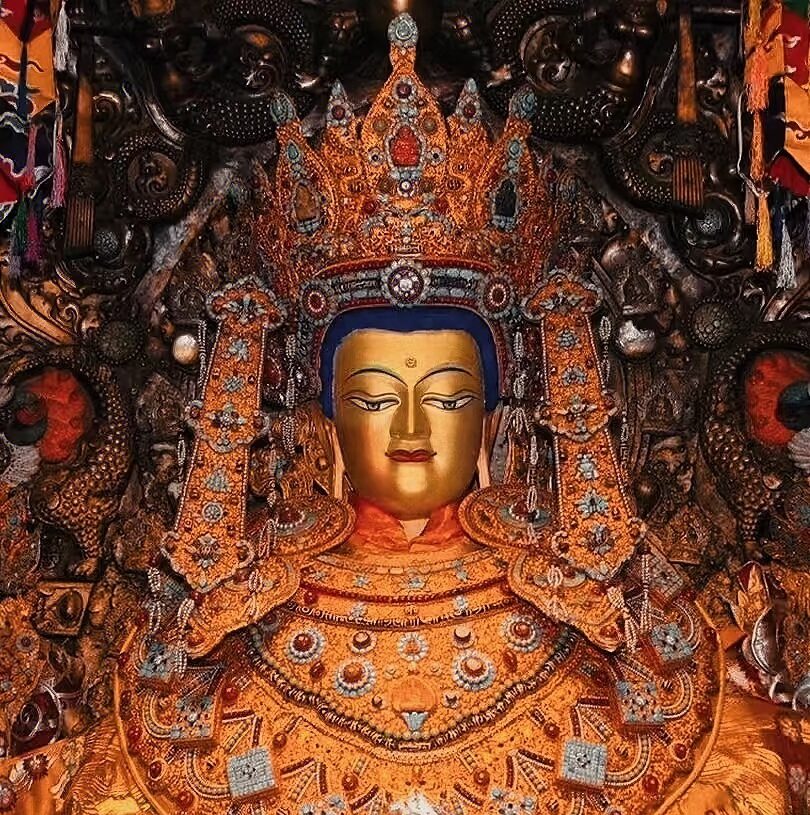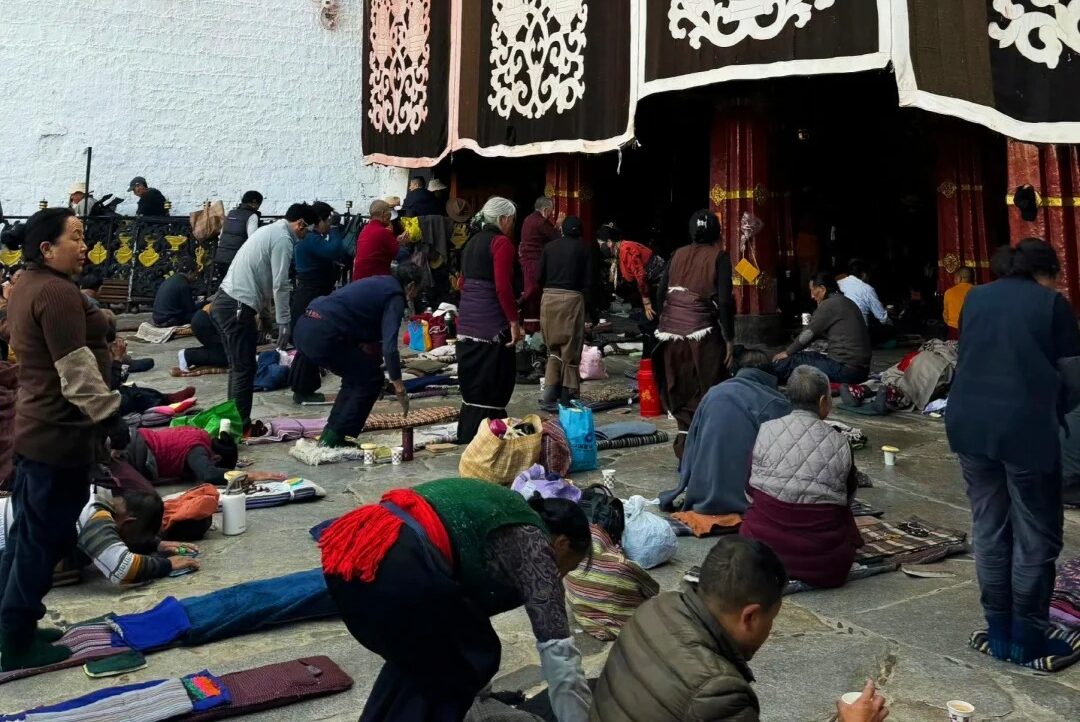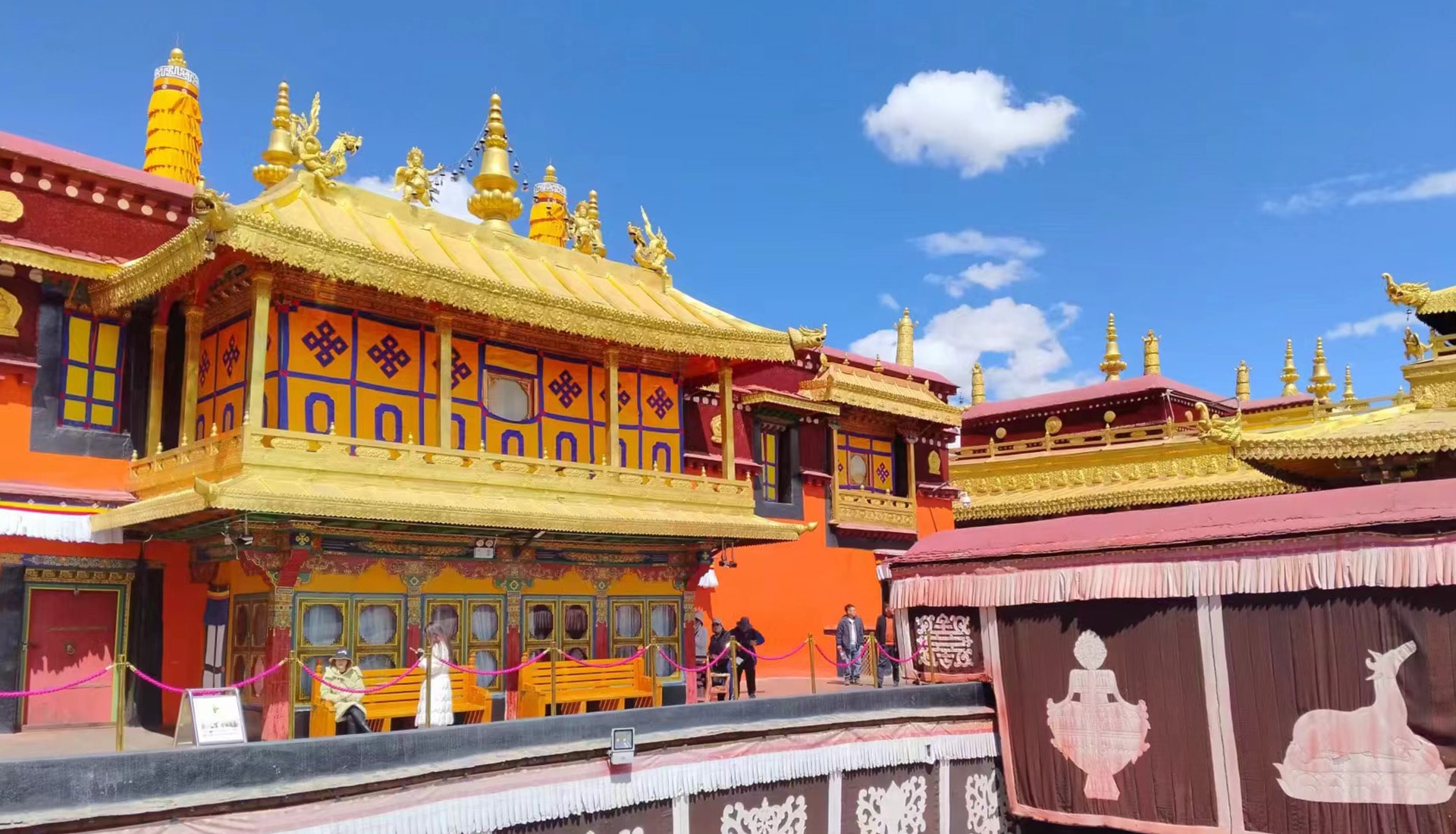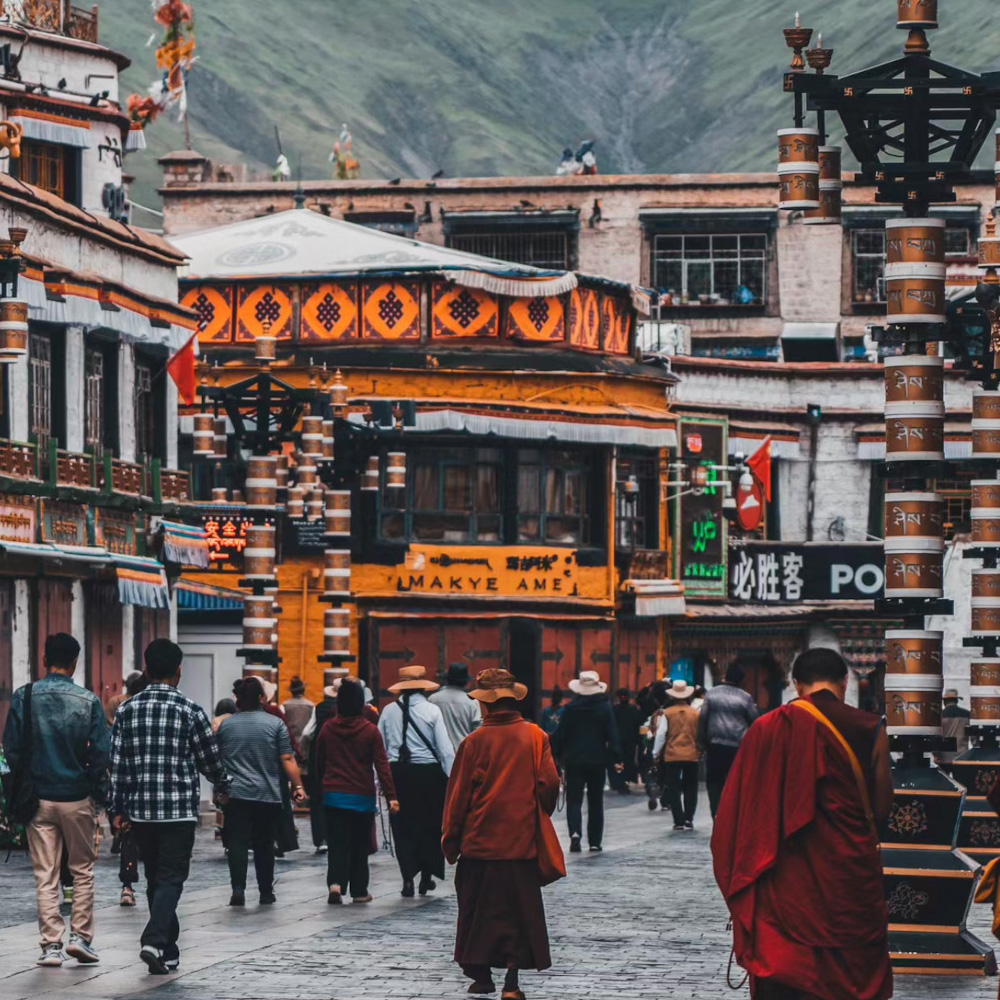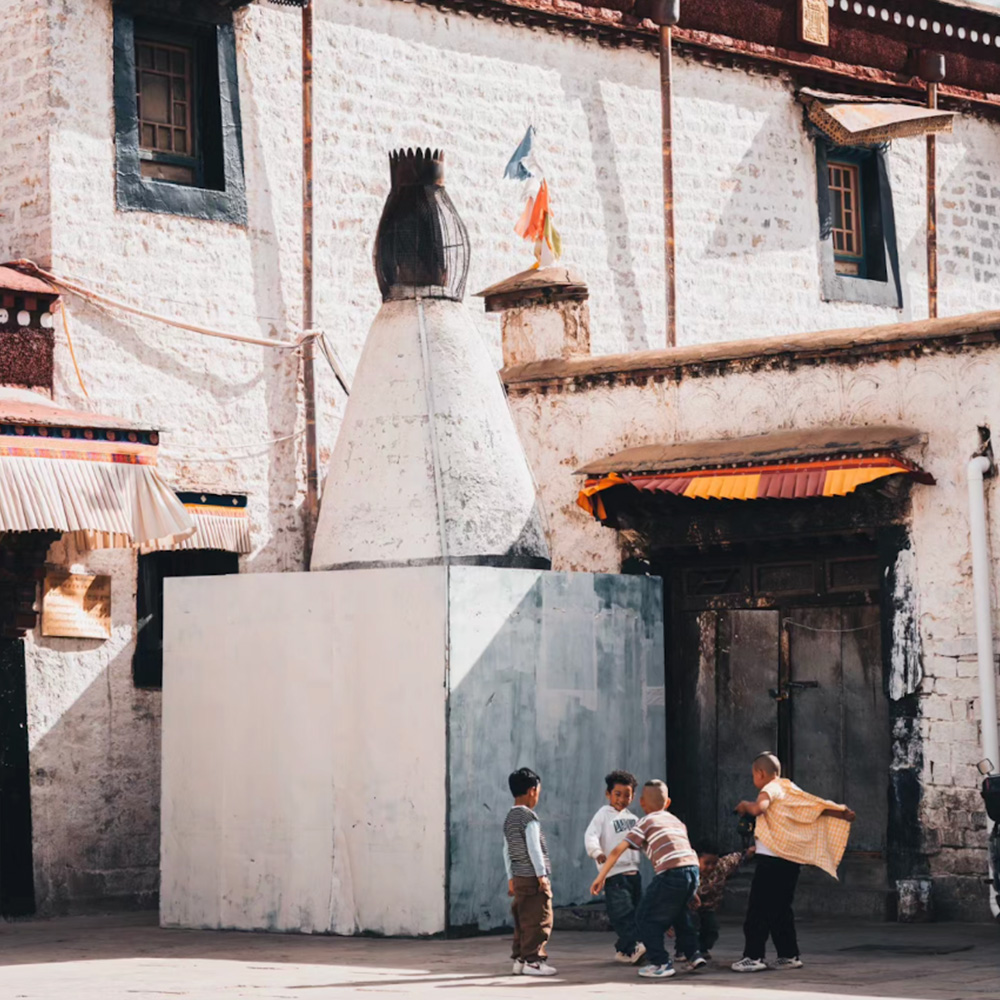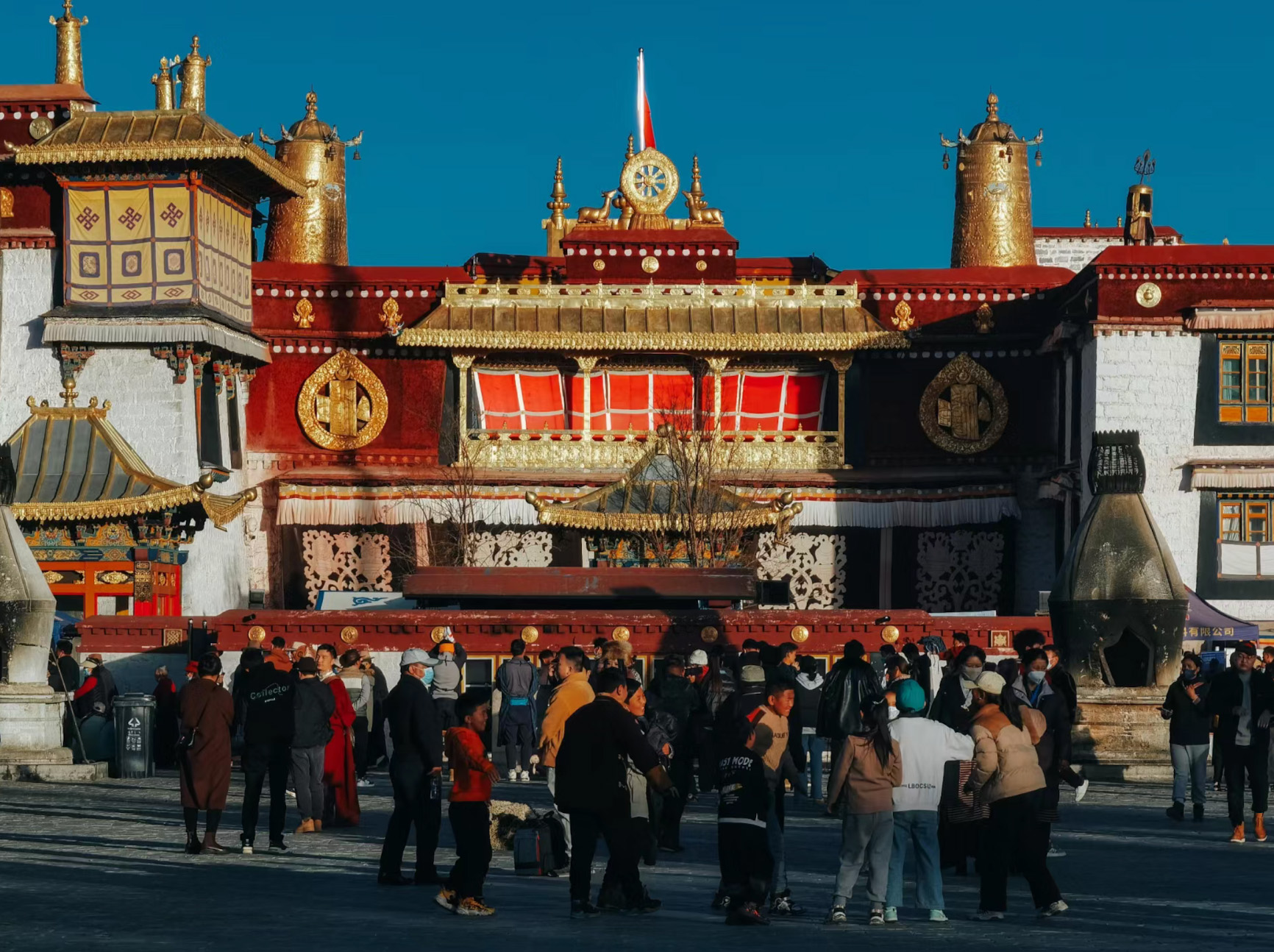As you enter the Jokhang Temple, the first thing you will see is the bustling square filled with devoted pilgrims and curious tourists. Some walk clockwise around the temple spinning prayer wheels, while others prostrate themselves in deep reverence at the entrance. Inside, the temple is steeped in a rich spiritual atmosphere—incense smoke wafts through the air, and the golden murals, intricate carvings, and solemn Buddha statues all tell stories of a thousand years of faith. During the Tibetan New Year, the temple hosts the grand Monlam Prayer Festival, attracting tens of thousands of worshippers in a truly awe-inspiring scene.
Beyond its religious significance, the Jokhang Temple is also a major tourist attraction. It holds immense historical and cultural value while showcasing the unique folk traditions of Tibet. Surrounding the temple is Barkhor Street, Lhasa’s famous pedestrian shopping area, lined with shops selling Tibetan handicrafts, thangka paintings, traditional medicines, and other local specialties. Visitors can enjoy authentic Tibetan cuisine and immerse themselves in the vibrant local culture.
In conclusion, the Jokhang Temple is not just a religious structure—it stands as a living testament to Tibet’s rich history and vibrant culture. It holds deep significance for the Tibetan people and serves as a bridge connecting visitors from around the world to the profound spiritual and cultural heritage of Tibet. Whether for scholars studying Tibetan Buddhism or travelers seeking unique cultural experiences, the Jokhang Temple is an invaluable cultural treasure and an unmissable travel destination.
Please note that the Jokhang Temple is a religious site, and visitors are expected to observe proper etiquette during their visit. Respect local customs, remain quiet, and avoid disturbing ongoing religious activities. It is also advisable to check the local weather and identify peak tourist seasons in advance to plan your trip accordingly.

